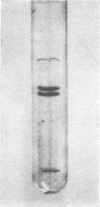Abstract
A moderately halophilic bacterium, Bacillus sp., isolated from rotting wood on the seashore in Nauru, produced an extracellular nuclease when cultivated aerobically in media containing 1 to 2 M NaCl. The enzyme was purified from the culture filtrate to an electrophoretically homogeneous state by ethanol precipitation, DEAE-Sephadex A-50 column chromatography, and Sephadex G-200 gel filtration. The enzyme consisted of two charge isomers and showed both RNase and DNase activities. Molecular weight was estimated to be 138,000 by Sephadex G-200 gel filtration. The enzyme had marked halophilic properties, showing maximal activities in the presence of 1.4 to 3.2 M NaCl or 2.3 to 3.2 M KCl. The enzyme hydrolyzed thymidine-5′-monophosphate-p-nitrophenyl ester at a rate that increased with NaCl concentration up to 4.8 M. In the presence of both Mg2+ and Ca2+, activity was greatly enhanced. The activity was lost by dialysis against water and low-salt buffer, but it was protected when 10 mM Ca2+ was added to the dialysis buffer. When the inactivated enzyme was dialyzed against 3.5 M NaCl buffer as much as 68% of the initial activity could be restored. The enzyme exhibited maximal activity at pH 8.5 and at 50°C on DNA and at 60°C on RNA and attacked RNA and DNA exonucleolytically and successively, producing 5′-mononucleotides.
Full text
PDF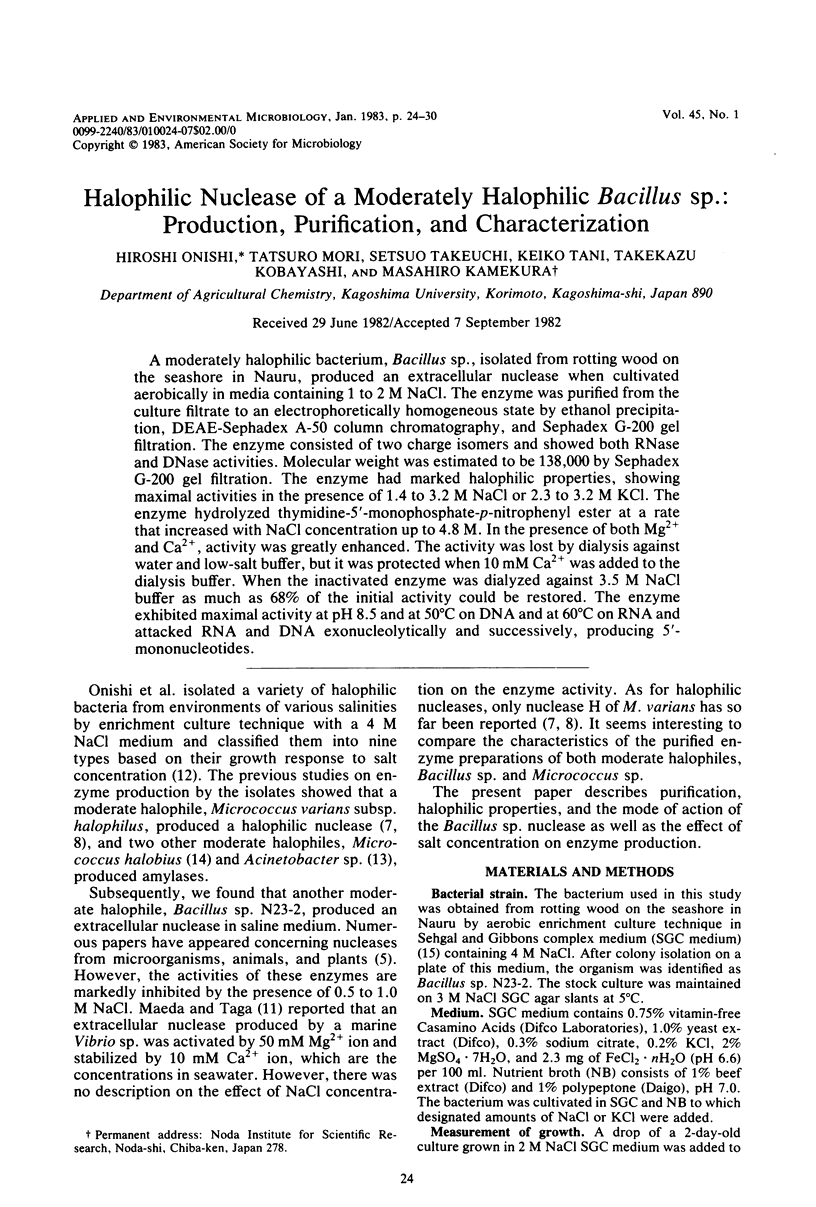
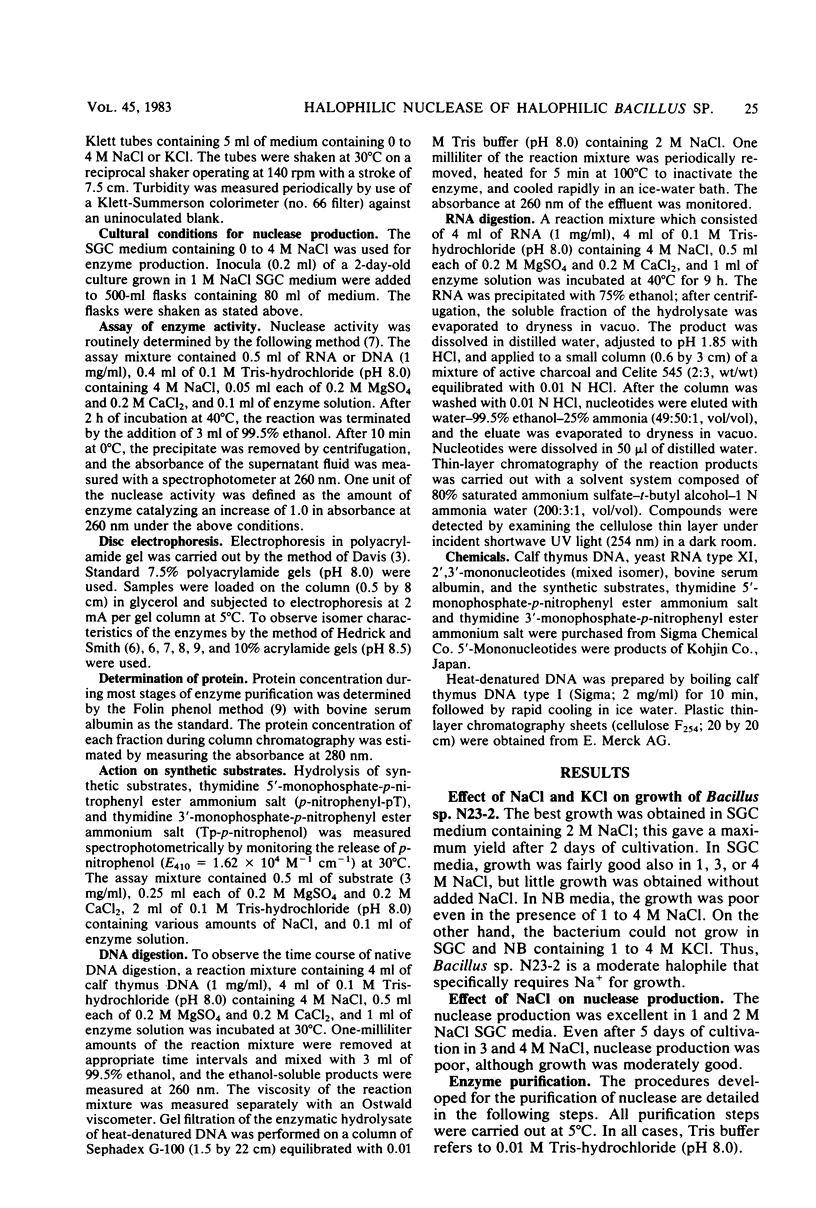
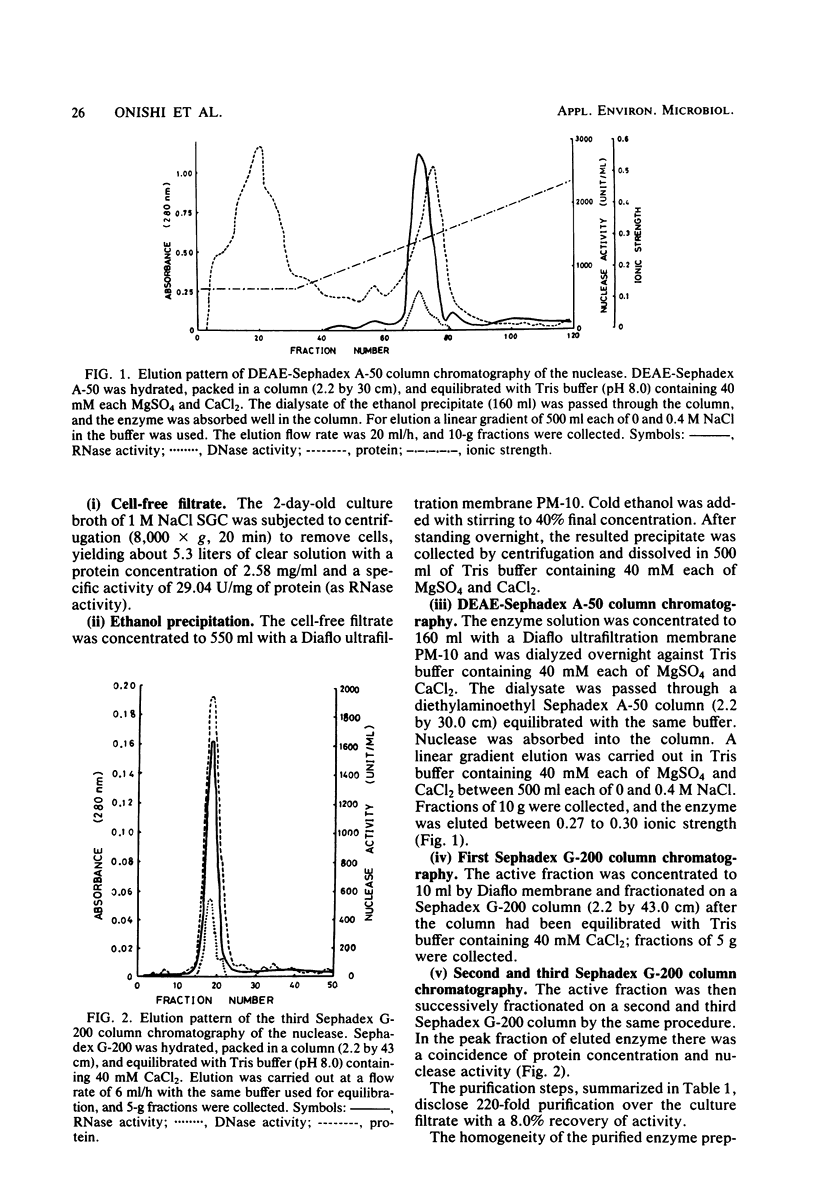
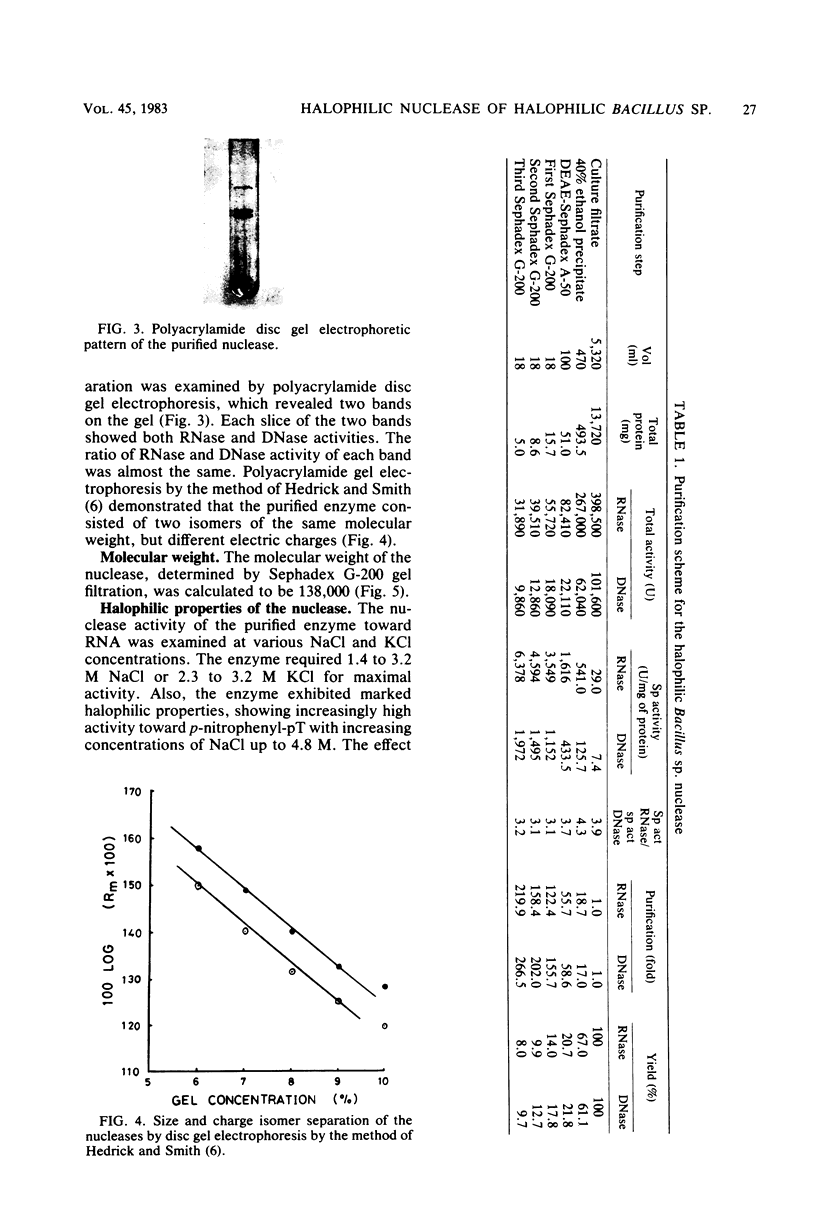
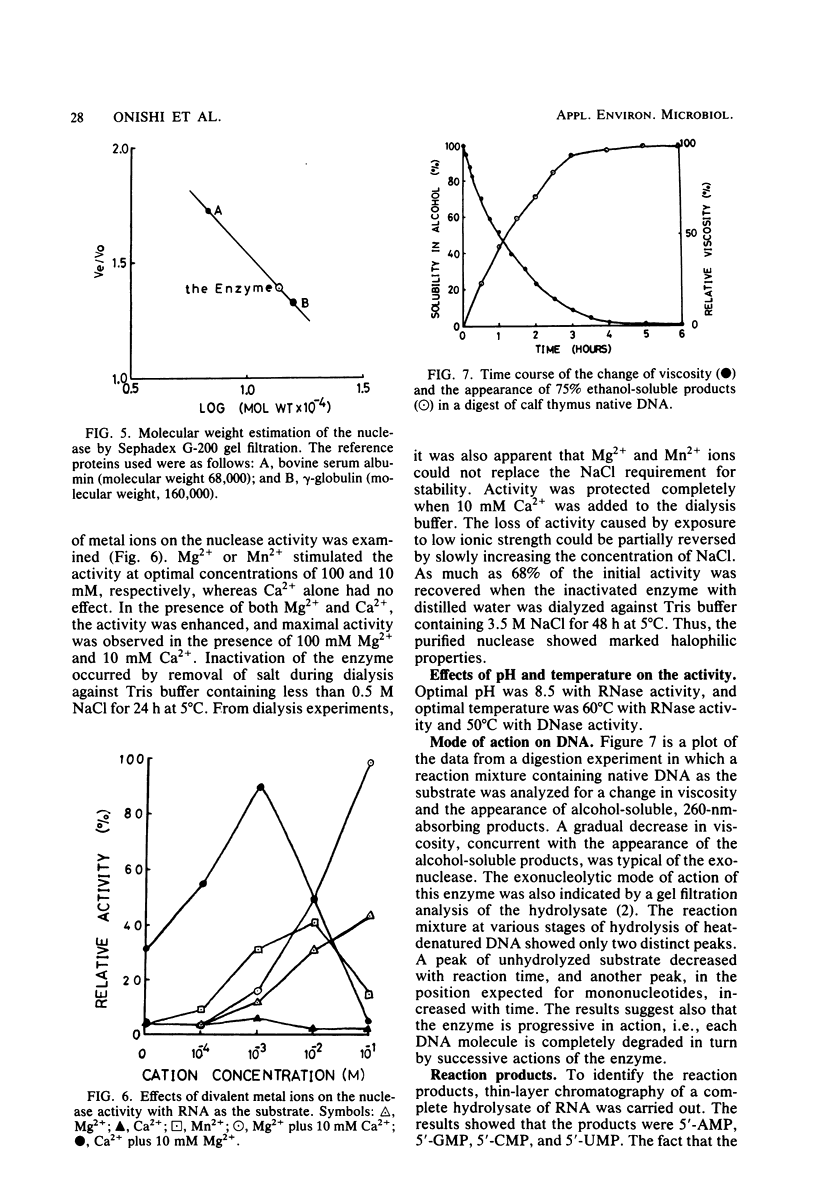
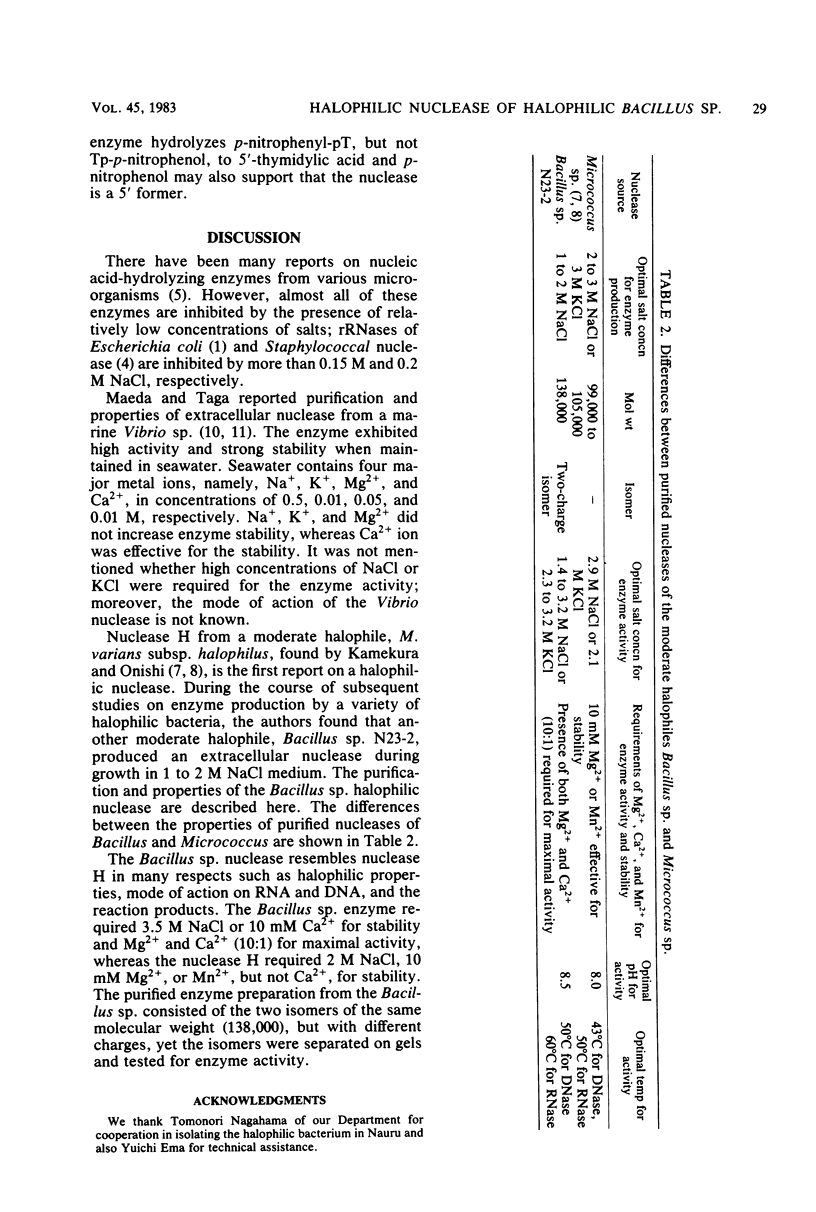
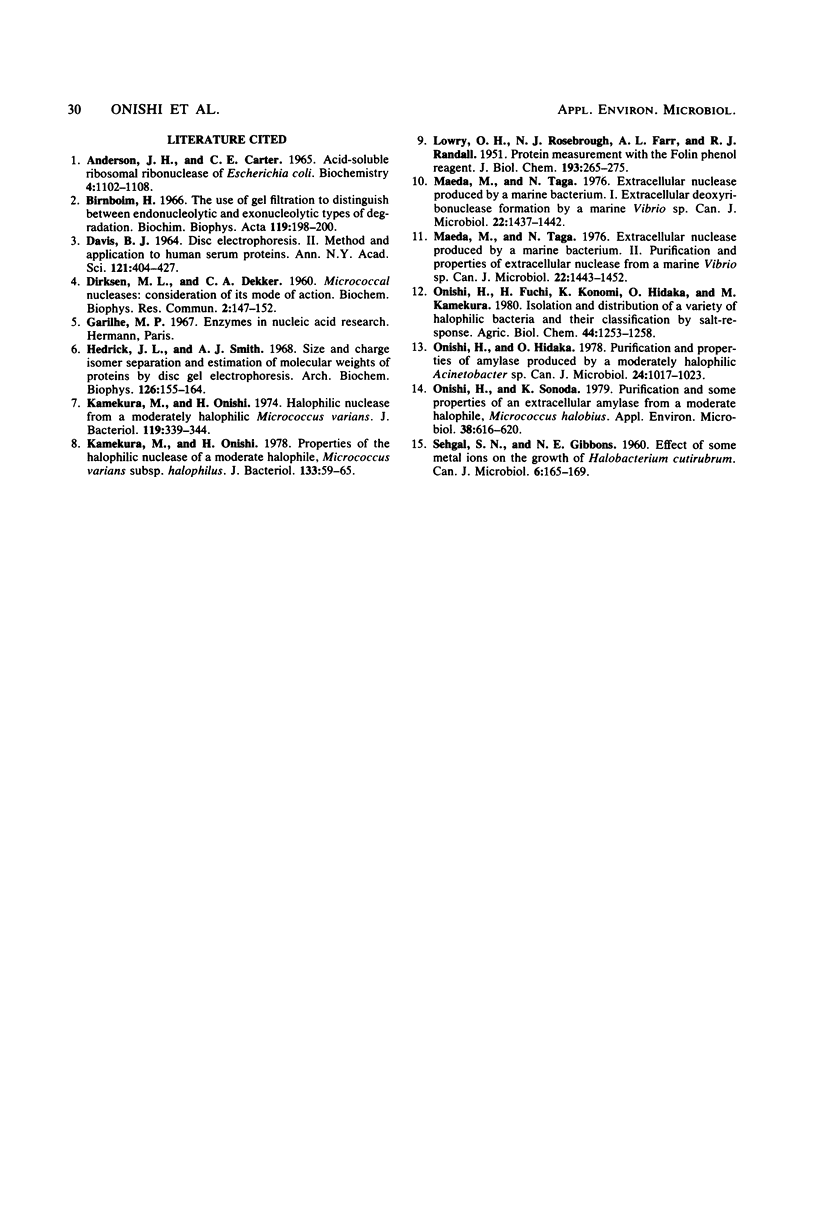
Images in this article
Selected References
These references are in PubMed. This may not be the complete list of references from this article.
- Anderson J. H., Carter C. E. Acid-soluble ribosomal ribonuclease of Escherichia coli. Biochemistry. 1965 Jun;4(6):1102–1108. doi: 10.1021/bi00882a019. [DOI] [PubMed] [Google Scholar]
- Birnboim H. The use of gel filtration to distinguish between endonucleolytic and exonucleolytic types of degradation. Biochim Biophys Acta. 1966 Apr 18;119(1):198–200. doi: 10.1016/0005-2787(66)90052-9. [DOI] [PubMed] [Google Scholar]
- DAVIS B. J. DISC ELECTROPHORESIS. II. METHOD AND APPLICATION TO HUMAN SERUM PROTEINS. Ann N Y Acad Sci. 1964 Dec 28;121:404–427. doi: 10.1111/j.1749-6632.1964.tb14213.x. [DOI] [PubMed] [Google Scholar]
- Hedrick J. L., Smith A. J. Size and charge isomer separation and estimation of molecular weights of proteins by disc gel electrophoresis. Arch Biochem Biophys. 1968 Jul;126(1):155–164. doi: 10.1016/0003-9861(68)90569-9. [DOI] [PubMed] [Google Scholar]
- Kamekura M., Onishi H. Halophilic nuclease from a moderately halophilic Micrococcus varians. J Bacteriol. 1974 Aug;119(2):339–344. doi: 10.1128/jb.119.2.339-344.1974. [DOI] [PMC free article] [PubMed] [Google Scholar]
- Kamekura M., Onishi H. Properties of the halophilic nuclease of a moderate halophile, Micrococcus varians subsp. halophilus. J Bacteriol. 1978 Jan;133(1):59–65. doi: 10.1128/jb.133.1.59-65.1978. [DOI] [PMC free article] [PubMed] [Google Scholar]
- LOWRY O. H., ROSEBROUGH N. J., FARR A. L., RANDALL R. J. Protein measurement with the Folin phenol reagent. J Biol Chem. 1951 Nov;193(1):265–275. [PubMed] [Google Scholar]
- Maeda M., Taga N. Extracellular nuclease produced by a marine bacterium. I. Extracellular deoxyribonuclease formation by a marine Vibrio sp. Can J Microbiol. 1976 Oct;22(10):1437–1442. doi: 10.1139/m76-213. [DOI] [PubMed] [Google Scholar]
- Maeda M., Taga N. Extracellular nuclease produced by a marine bacterium. II. Purification and properties of extracellular nuclease from a marine Vibrio sp. Can J Microbiol. 1976 Oct;22(10):1443–1452. doi: 10.1139/m76-214. [DOI] [PubMed] [Google Scholar]
- Onishi H., Hidaka O. Purification and properties of amylase produced by a moderately halophilic Acinetobacter sp. Can J Microbiol. 1978 Sep;24(9):1017–1023. doi: 10.1139/m78-169. [DOI] [PubMed] [Google Scholar]
- Onishi H., Sonoda K. Purification and Some Properties of an Extracellular Amylase from a Moderate Halophile, Micrococcus halobius. Appl Environ Microbiol. 1979 Oct;38(4):616–620. doi: 10.1128/aem.38.4.616-620.1979. [DOI] [PMC free article] [PubMed] [Google Scholar]
- SEHGAL S. N., GIBBONS N. E. Effect of some metal ions on the growth of Halobacterium cutirubrum. Can J Microbiol. 1960 Apr;6:165–169. doi: 10.1139/m60-018. [DOI] [PubMed] [Google Scholar]



